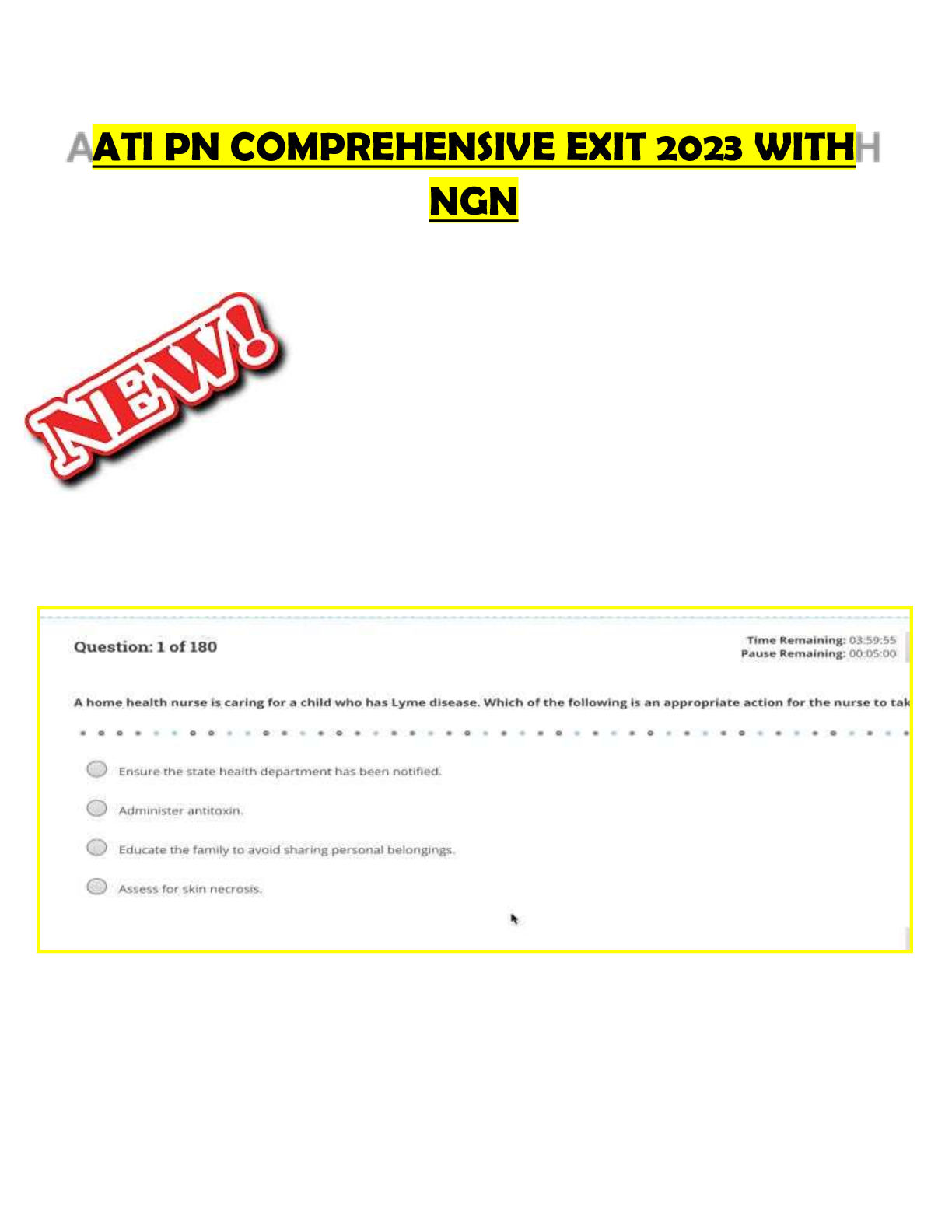*NURSING > ATI > VATI ATI Mental health Test. The Highly tested question with answers, rationale and further explanat (All)
VATI ATI Mental health Test. The Highly tested question with answers, rationale and further explanation with notes and examples.
Document Content and Description Below
VATI ATI Mental health test (60 Questions and Answers) 1. A nurse is planning care for a client following a suicide attempt. Which of the following interventions should the nurse include in the plan?... 2. A nurse is performing an admission assessment for a client who appears withdrawn and fearful. Which of the following actions should the nurse take first? 3. A nurse is caring for an adolescent client who has anorexia nervosa. The client states, "Have I done any permanent damage to my body?" Which of the following responses should the nurse make? "You should ask your provider that question." This response by the nurse does not address the client's question and can invalidate the client's concerns. "I wouldn't worry about any permanent damage you might have caused right now." This response by the nurse is giving false reassurance, which indicates to the client that there is no cause to worry and might cause the client to stop sharing feelings. "Why do you feel like you have damaged your body?" This response by the nurse is asking a "why" question, which implies criticism and often makes the client feel defensive. "You're afraid you have caused physical injury to yourself?" MY ANSWER This response by the nurse is repeating the main idea of what the client has said, which will allow for clarification of any misunderstanding on the part of the client or the nurse. 4. A nurse is caring for a client following a fire that destroyed her home and killed one of her children. The client is crying and does not make eye contact with the nurse. Which of the following questions should the nurse ask first? "How are you feeling at this time?" Although the nurse should assist the client by identifying her feelings, the nurse should ask another question first. "Is there someone I can call to be with you now?" Although the nurse should assist the client by asking about individuals who can provide emotional support, the nurse should ask another question first. "Can you tell me what you have done in the past when going through a difficult time?" Although the nurse should assist the client by identifying past coping mechanisms, the nurse should ask another question first. "Have you thought of harming yourself?" MY ANSWER The greatest risk to this client is self-harm due to the loss of her child and home; therefore, the first question the nurse should ask a client who is having a personal crisis is to determine if the client has suicidal ideation. If so, the nurse should take action to protect the client from self-harm. 5.A nurse is checking laboratory values for a hospitalized young adult client who has bipolar disorder and is taking lithium. Which of the following values is the priority for the nurse to report to the provider? Lithium level 0.8 mEq/L The client's lithium level is within the expected reference range of 0.4 to 1.3 mEq/L. Toxic effects occur at 1.5 mEq/L and higher. The nurse should report this level to the provider, because it is important for the provider to consider when prescribing lithium; however, another laboratory value is the priority to report. Serum creatinine 2.1 mg/dL MY ANSWER The client's serum creatinine level is above the expected reference ranges of 0.5 to 1 mg/dL for young adult females and 0.6 to 1.2 mg/dL for young adult males. The greatest risk to this client is decreased kidney function, which can cause an increase in the client's lithium level; therefore, this value is the priority for the nurse to report to the provider. The client's lithium dosage might need to be modified based on this laboratory value and the provider will need to determine the cause of the client's increased creatinine level. Causes of increased serum creatinine include dehydration as well as renal disorders. Lithium is contraindicated for clients who have severe renal disease, cardiac disease, or severe dehydration. Serum sodium 141 mEq/L The client's serum sodium level is within the expected reference range of 136 to 145 mEq/L. The nurse should report this level to the provider because decreased levels can lead to lithium toxicity; however, another laboratory value is the priority to report. T3 180 ng/dL The client's T3 level is within the expected reference range for adult clients of 70 to 205 ng/dL. Levels of T3, T4, and TSH should be checked annually while a client is taking lithium because lithium can cause thyroid gland enlargement and even hypothyroidism. The nurse should report this level to the provider; however, another laboratory value is the priority to report. 6. A nurse is providing information to a client who is seeking voluntary admission to a mental health facility. Which of the following information should the nurse include? "You cannot leave until your provider discharges you." A client who seeks voluntary admission can leave the facility whenever they decide they no longer want to receive treatment. If assessment of the client reveals that they are a threat to themselves or others, the provider can prevent them from leaving. "You will give up your right to refuse treatment upon admission." Whether a client is receiving treatment voluntarily or involuntarily, they retain the right to refuse any treatment they do not want to receive. A client who is receiving mental health treatment has the same rights as a client receiving any other kind of health care. "You will still need to give informed consent for treatments after admission." MY ANSWER A client who seeks voluntary admission to a mental health facility has the same rights as clients receiving any other kind of health care. The client will still need to give informed consent for treatments and therapies, such as electroconvulsive therapy. "Your provider will notify your employer of your admission." Whether a client is receiving treatment voluntarily or involuntarily, they retain the right to confidentiality. Informing an employer of an employee's admission without the client's permission is a breach of confidentiality. 7. A nurse is developing a plan of care for an adolescent client who has conduct disorder. Which of the following interventions should the nurse include in the plan? Determine if the client has a history of command hallucinations. The nurse should determine the history of command hallucinations for clients who have schizophrenia. Clients who are having command hallucinations are experiencing a sensory disturbance that can lead to self-harm or harm to others. Command hallucinations are not a manifestation of conduct disorder. Instruct the client on thought-stopping techniques. The nurse should teach clients who have obsessive-compulsive disorder how to use thought-stopping techniques. These techniques can help clients control obsessive thoughts or actions by interrupting the undesirable action and substituting a more positive action. Obsessive thoughts are not a manifestation of conduct disorder. Initiate a behavioral contract with the client. MY ANSWER A client who has conduct disorder can demonstrate patterns of behavior that are aggressive, disrespectful of others' rights, and can lead to injury of others. The nurse should initiate a behavioral contract for a client who has conduct disorder. A behavioral contract helps to develop trust between the client and the nurse and emphasizes the client's responsibility to commit to work on changes in behavior. Monitor the client's neurologic status. The nurse should monitor the neurologic status of a client who has delirium. Clients who have delirium can show an acute onset of manifestations. The nurse should monitor for a change in the client's level of consciousness, decreased attention span, memory impairment, and poor judgment. Neurologic changes are not a manifestation of conduct disorder. 8. A hospice nurse is talking with the family of a client who recently died from cancer following a series of chemotherapy treatments. One of the adult children is angry with the provider and blames the provider for their father's death. Which of the following defense mechanisms is the family member using? Dissociation Family members can use dissociation as a defense mechanism to separate themselves from a situation they find uncomfortable. Rationalization Family members can use rationalization as a defense mechanism to justify unacceptable actions or behavior. Repression MY ANSWER Family members can use repression as a defense mechanism to unconsciously block unpleasant experiences. Displacement The family member is using the defense mechanism of displacement. When this family member uses displacement, they are transferring their feelings of anger to the provider so they do not have to cope with their own feelings of sadness and loss. 9. A nurse in an acute care facility is providing teaching for the adult child of an older adult client who is admitted with a urinary tract infection and delirium. The client has been living independently at home. Which of the following statements by the adult child demonstrates the teaching has been effective? "I should look into the possibility of long-term care for my father when he is discharged." Dementia is not reversible and is progressive, making the need for long-term care likely. Delirium can include severe confusion, agitation, and disorientation, but, when treated promptly, is reversible and does not progress. "I would like information about respite care for when my father is discharged." The family of a client who has dementia, rather than delirium, may need respite care due to the progressive, 24-hr care needed for a client who has dementia. Respite care is a service that provides relief for family members who must provide constant care for a client who has dementia or another chronic or a terminal illness. In respite care, a substitute caregiver provides care while the family member has some time off. Respite care can occur in the home but some communities offer short term respite services in over-night facilities. "I expect that my father will no longer be confused when he is discharged." MY ANSWER The client who has delirium is likely to return to normal functioning after the underlying cause of the delirium is discovered and treated. Common causes of delirium include metabolic disorders, medication effects, and systemic infections. Delirium has a sudden onset over hours or days and can have distressing manifestations of acute confusion, agitation, rapid mood swings and slurred speech. However, it can be completely reversed by treatment. Before discharge the client and family should receive teaching about ways to prevent urinary tract infection and other causes of delirium which are fairly common in older adults. "I will obtain a permanent identification bracelet for my father when he is discharged." A client who has dementia, rather than delirium, may require a permanent identification bracelet for safety after discharge if wandering is common. Other strategies for clients who have dementia and are at risk for wandering include putting locks at the tops of doors, or using bed and chair alarms that tell a caregiver when the client is walking about. 10. A nurse is caring for a client who is experiencing a manic episode. Which of the following actions should the nurse take first? Provide supervised physical activities. The nurse should encourage the client to participate in physical activities to help the client release tension and expel energy. However, there is another action the nurse should take first. Maintain a calm attitude with the client. The nurse should maintain a calm attitude when interacting with the client in order to limit the risk of increasing the client's anxiety. However, there is another action the nurse should take first. Decrease environmental stimuli. MY ANSWER The nurse should decrease environmental stimuli to minimize the client's agitation and anxiety. However, there is another action the nurse should take first. Encourage the client to rest each hour. The greatest risk to this client is injury from exhaustion due to the manic phase; therefore, the priority action the nurse should take is to encourage the client to rest for 3 to 5 min every hour. 11. A nurse is leading a medication education group for several clients. A client who is sometimes violent becomes angry and begins yelling at others in the group. Which of the following actions should the nurse take? (Select all that apply.) Speak to the client in an aggressive tone of voice. Move others away from the client. Offer the client a PRN dose of lorazepam. Stand directly in front of the client. Ask the client open-ended questions about the behavior. MY ANSWER Speak to the client in an aggressive tone of voice is incorrect. The nurse should speak clearly and assertively but not aggressively to the client who is angry. Speaking in an aggressive tone can escalate the situation into one of violence. The nurse should maintain a calm demeanor and use short sentences while talking to the client slowly. Move others away from the client is correct. A large personal space should be maintained around the client who is angry. If the client's behavior continues to escalate, the nurse should move others away from the client for their safety. Offer the client a PRN dose of lorazepam is correct. Antianxiety medication can be used in conjunction with de-escalation techniques to prevent a violent episode. Stand directly in front of the client is incorrect. The nurse should stand to the side of the client and encourage the client to sit down. Standing in front of the client can be perceived as confrontational to the client. Ask the client open-ended questions about the behavior is correct. This communication technique is nonthreatening and encourages the client to express their feelings. 12. A charge nurse is planning an in-service for a group of newly licensed nurses about the use of restraints. Which of the following information should the nurse include? Record the client's behavior every 15 min while in restraints. MY ANSWER The nurse should complete a written record of the client's behavior every 15 min in the client's medical record while in restraints. The client should be considered for reintegration when they are able to follow commands and exhibit self-control of behavior. Secure the restraint to the client's bed rail using a slip knot. The nurse should secure the restraint to the removeable portion of the bed frame using a half-bow or quick-release knot. Raising all four bedrails to keep a client in bed is not considered a restraint. A restraint is any chemical or physical device that is used to limit the movement of a client's arms, legs, head or body. Raising all four bedrails with the intent to prevent a client from getting out of bed is considered a restraint. Additionally, raising all four bedrails increases a client's risk for a fall. The nurse should assess a restrained client once every 2 hr. The nurse should closely monitor the client's vital signs and physiological needs frequently while in restraints. The nurse should offer food, fluids, and toileting and monitor the client for pain. These interventions should occur every 15 to 30 min while the client is restrained, or more often if it is facility policy. The nurse should document these interventions in the client's medical record. 13. A nurse is assessing a client who has bulimia nervosa. Which of the following findings should the nurse expect? Yellow skin A client who has anorexia nervosa can have yellow skin due to carotenemia. Dental caries MY ANSWER [Show More]
Last updated: 1 month ago
Preview 1 out of 51 pages

Reviews( 5 )

by ddran143 · 3 years ago

by ddran143 · 3 years ago
Most welcome by SuperSolutions©. 3 years ago

by SuperSolutions© · 3 years ago

by brieanna00 · 3 years ago
Thank you. Happy studying. by SuperSolutions©. 3 years ago

by SuperSolutions© · 3 years ago
Document information
Connected school, study & course
About the document
Uploaded On
Nov 20, 2020
Number of pages
51
Written in
Additional information
This document has been written for:
Uploaded
Nov 20, 2020
Downloads
4
Views
370


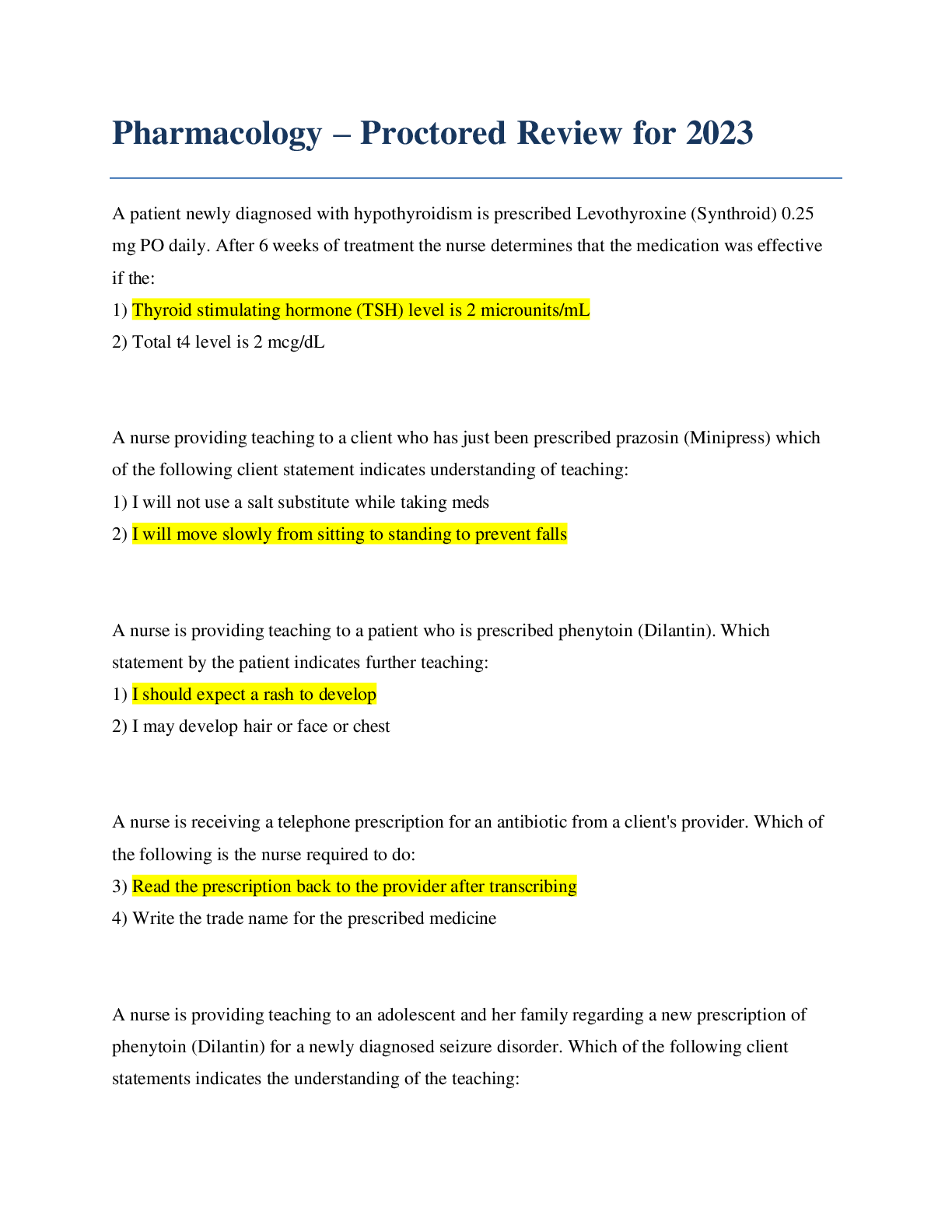
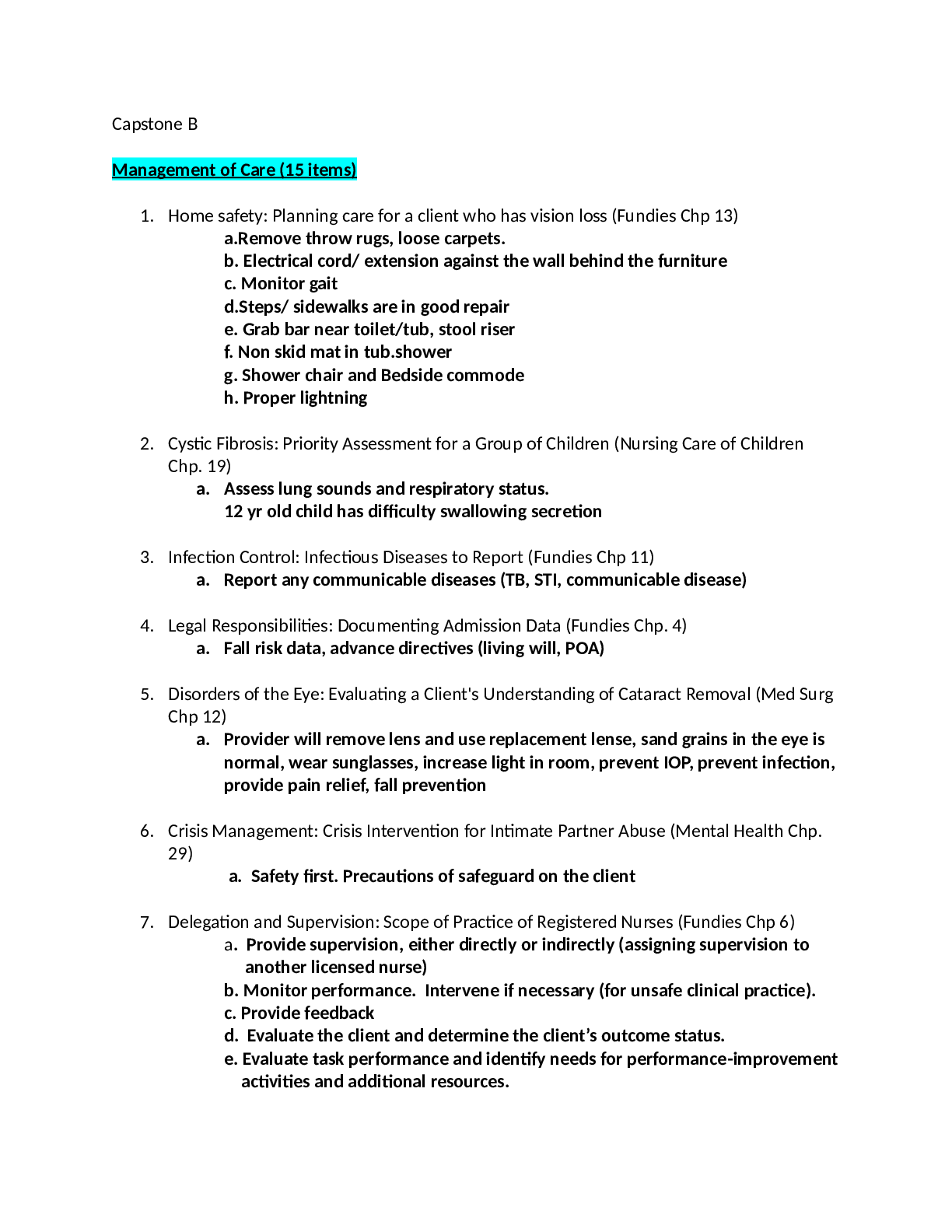
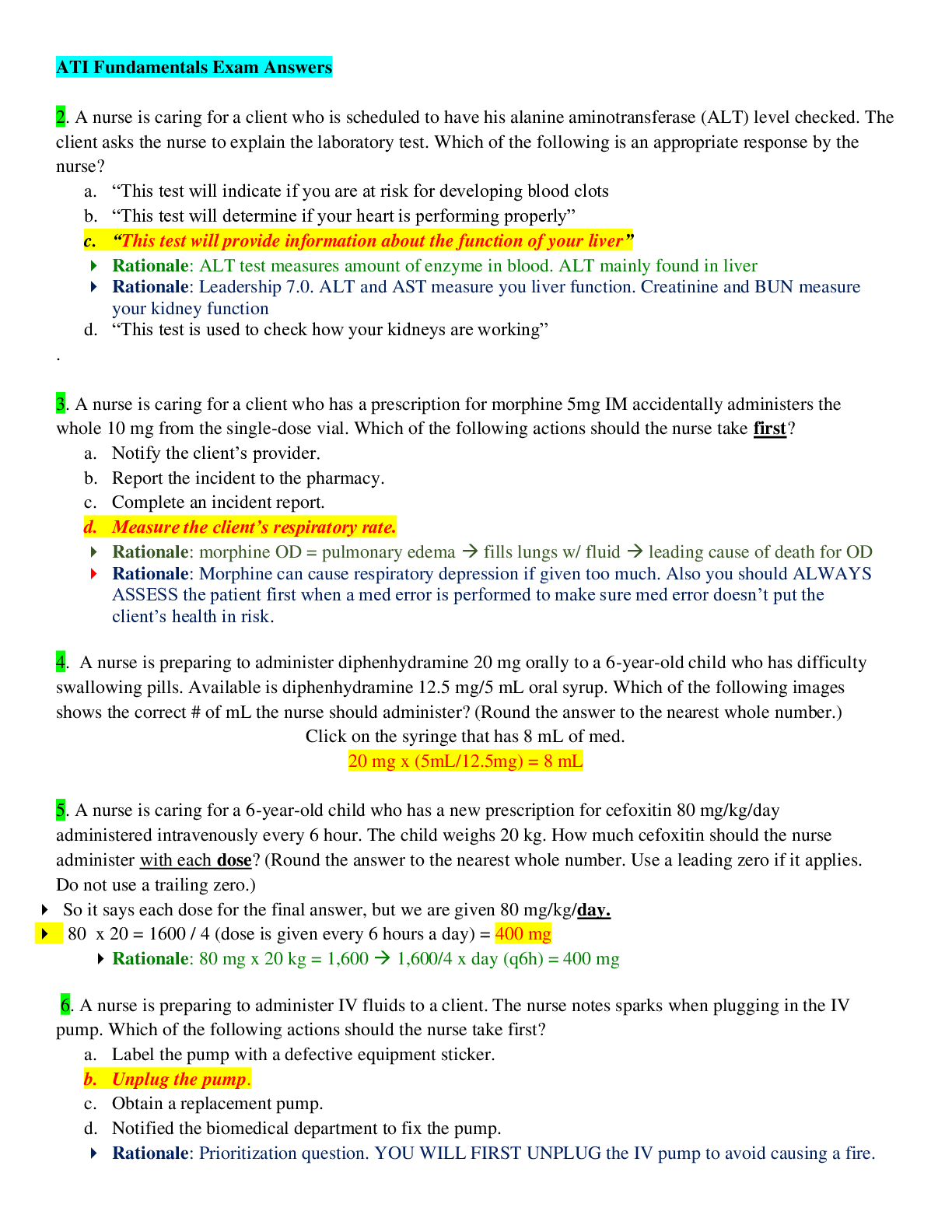


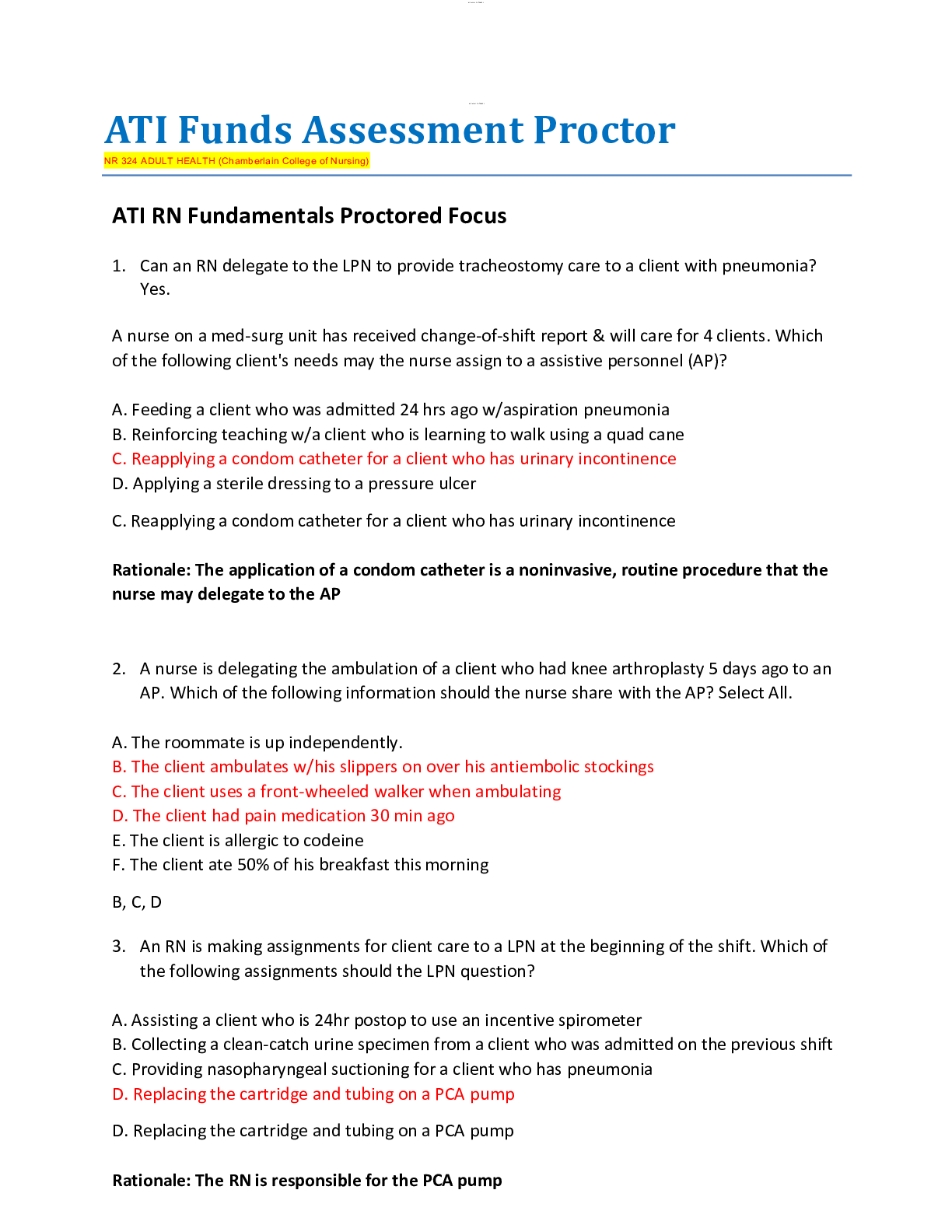



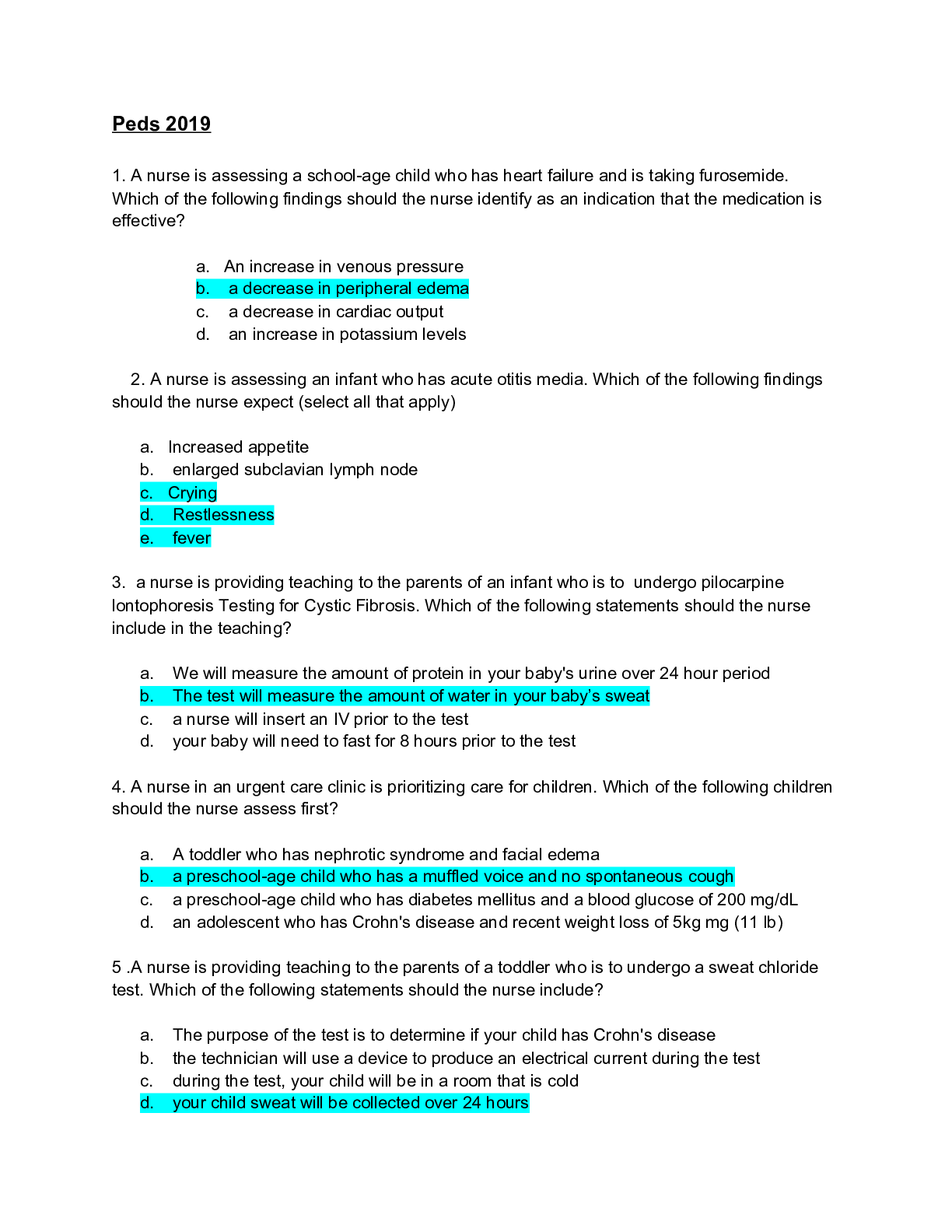
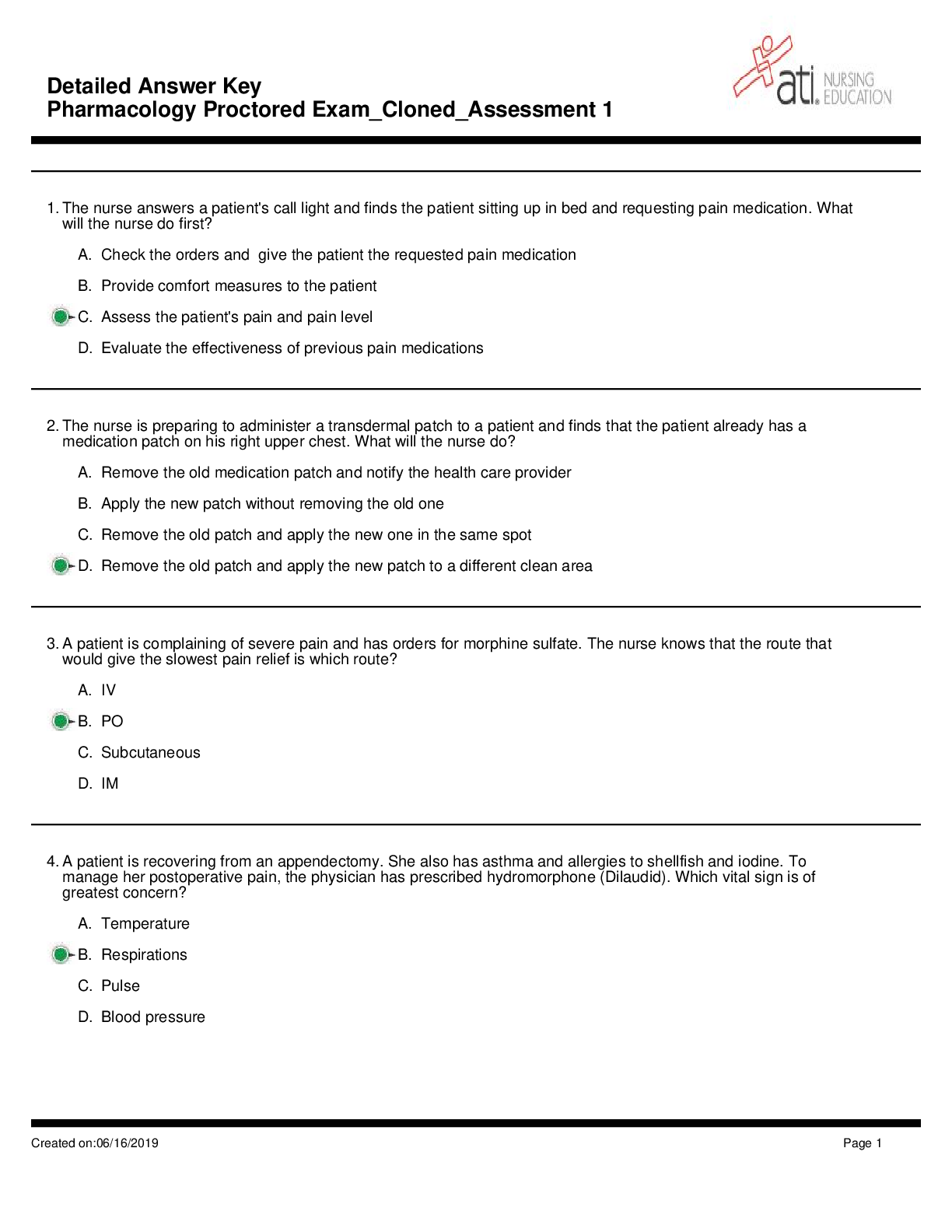

 (2000+ Q & A).png)
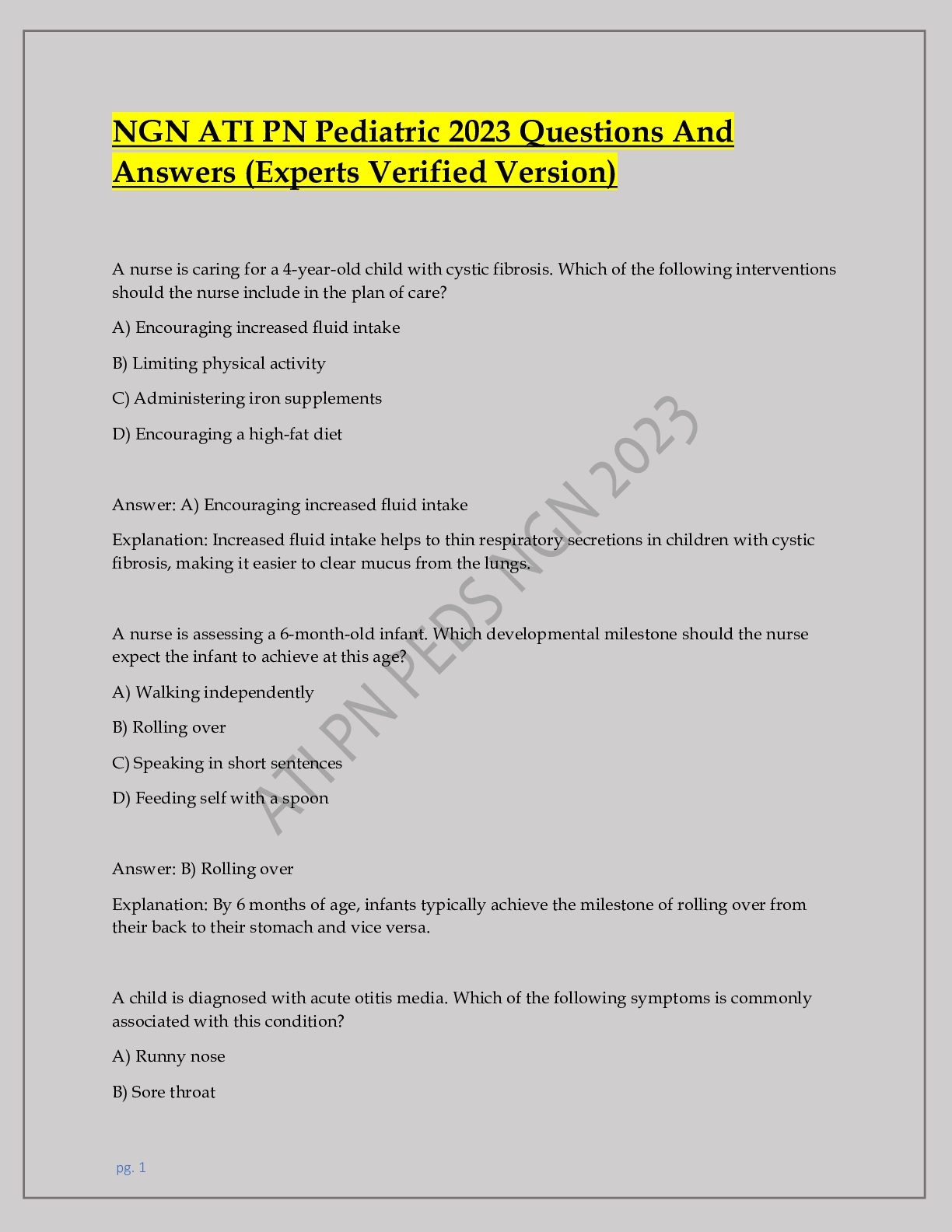

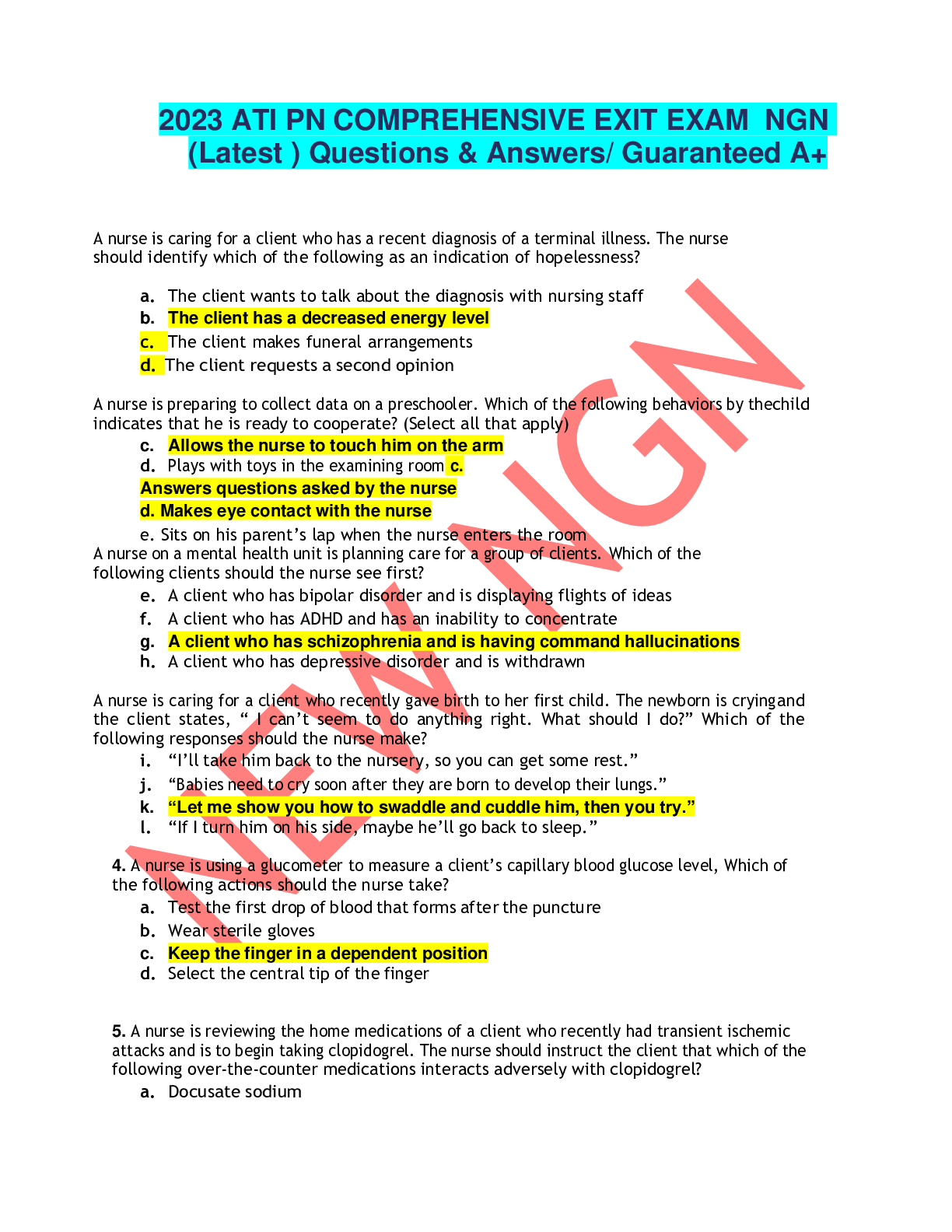
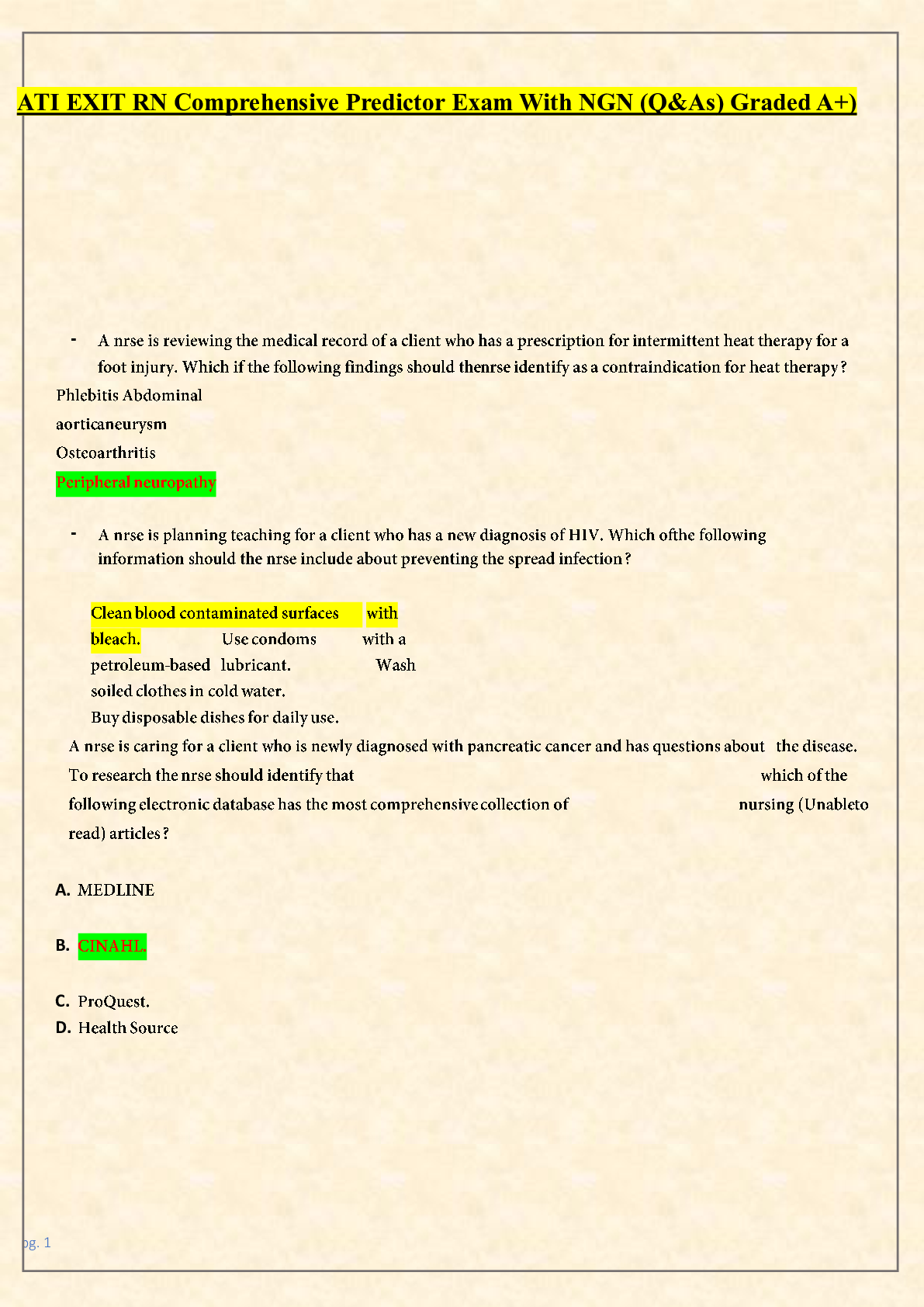



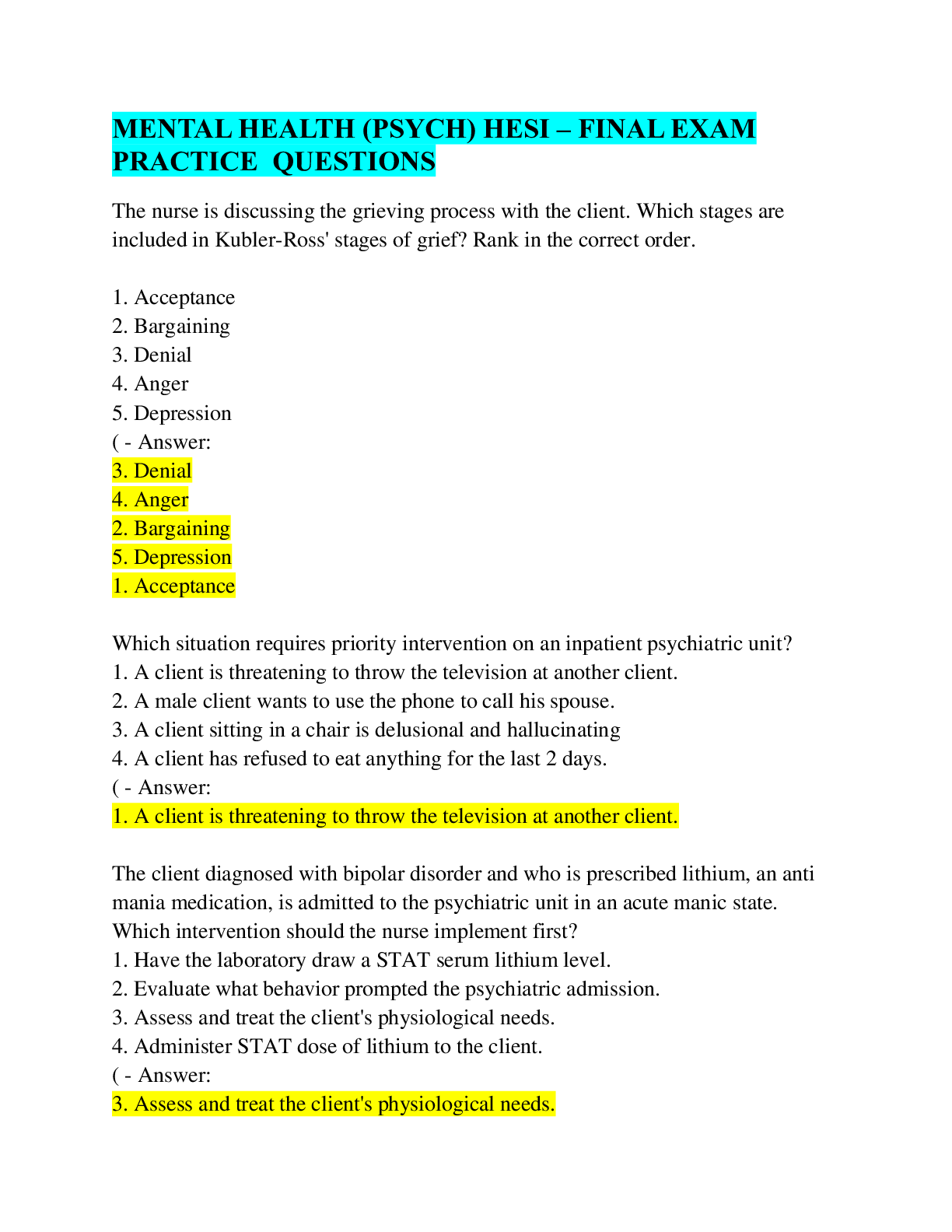
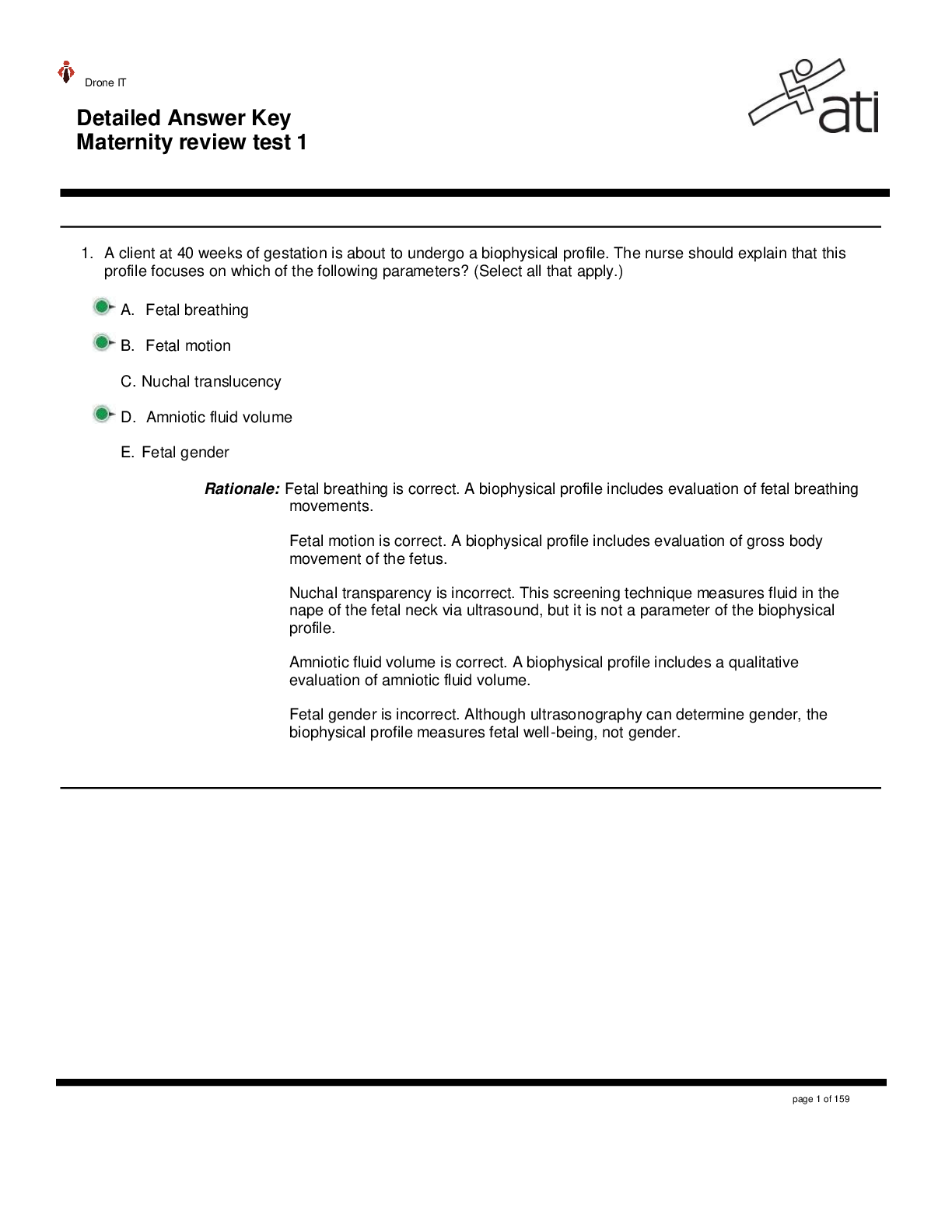
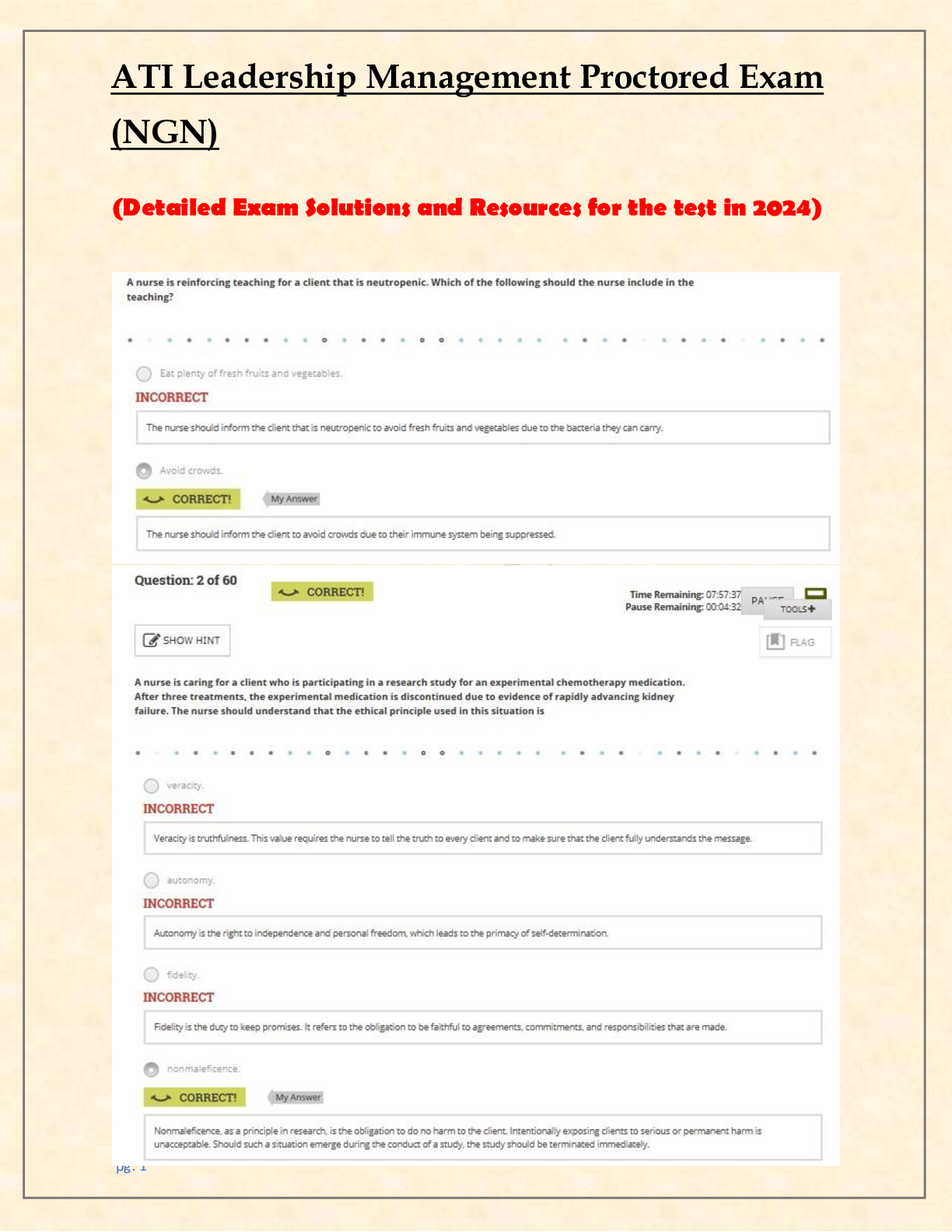
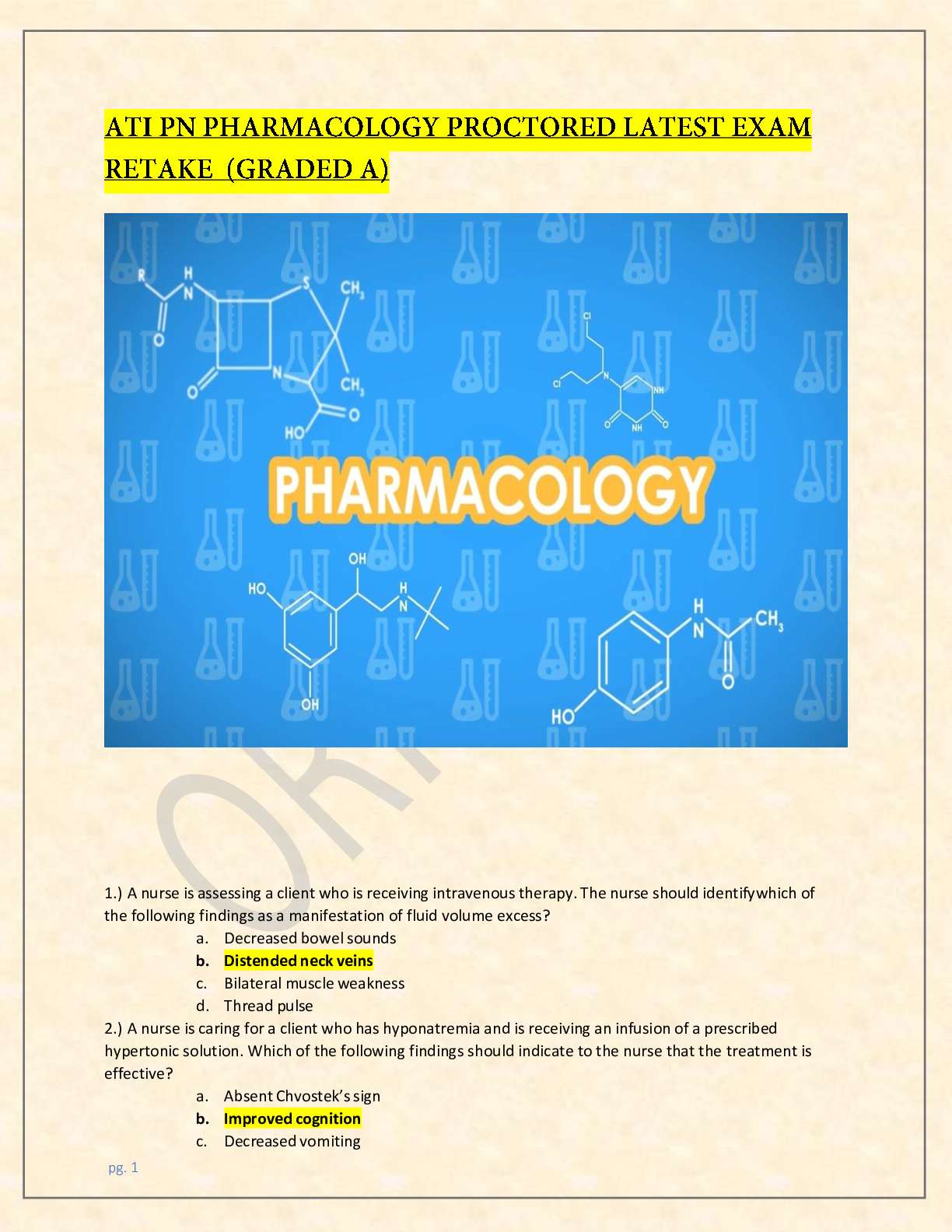

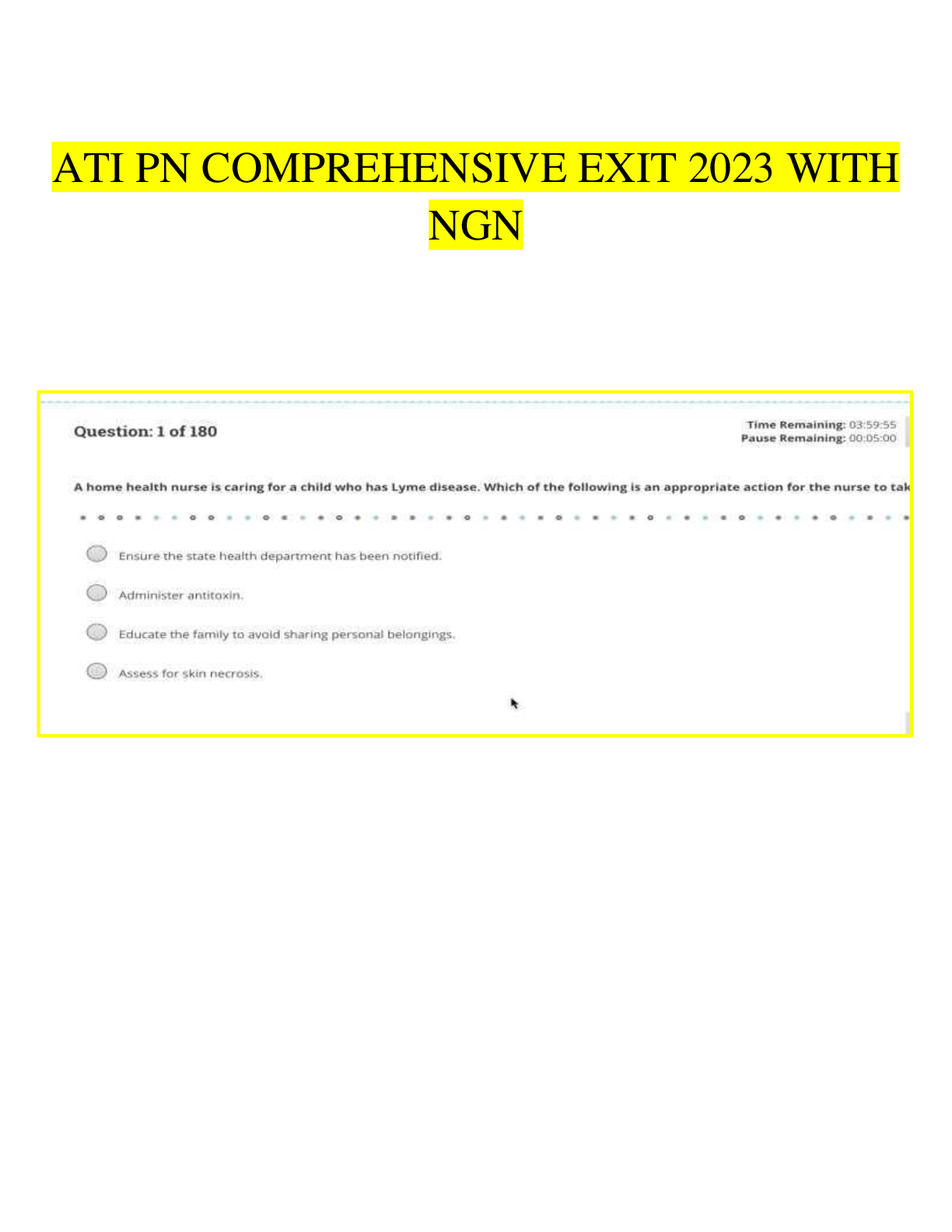


_Already Graded A.png)
